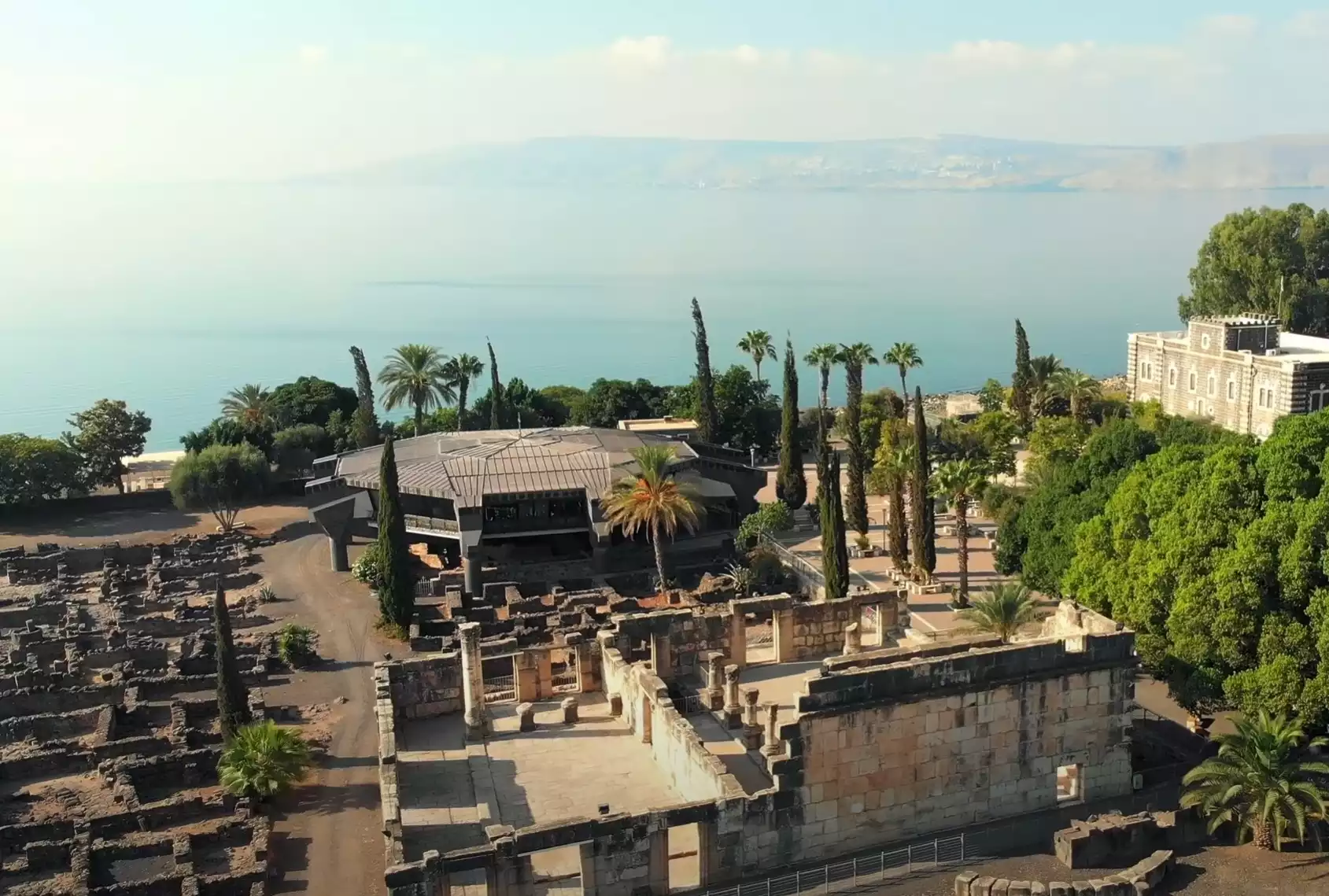
Nestled on the northern shore of the Sea of Galilee, Capernaum, an ancient town of profound historical significance, served as a pivotal locale in the early years of Christianity. This town, vibrant during the first century, witnessed the transformative teachings and miraculous works of Jesus Christ. The town’s rich history, archaeological findings, and scriptural mentions paint a vivid picture of its role in the unfolding story of Christianity.
Capernaum’s Emergence in History and Scripture
Capernaum’s emergence as a notable biblical site is deeply intertwined with its mention in the New Testament. Described as the place where Jesus settled after leaving Nazareth, it became the epicenter of his ministry. This town, with its strategic location, fostered a diverse population and a bustling economy, primarily driven by fishing and trade.
The New Testament chronicles several key events that transpired in Capernaum, highlighting its significance in Jesus’ life and teachings. It is here that he performed numerous healings, including the healing of a centurion’s servant, and delivered profound teachings, such as the famous “Bread of Life” discourse. These historical accounts not only underscore Capernaum’s religious importance but also offer insights into the socio-cultural context of the era.
Archaeological excavations in Capernaum have unearthed remnants of ancient synagogues and houses, including what is believed to be the house of Saint Peter. These discoveries provide tangible links to the past, allowing historians and believers alike to connect with the town’s storied history. The synagogue, dating back to the 4th century, stands as a testament to the enduring religious significance of the site, long after the time of Jesus.
Capernaum’s Archaeological Revelations and Legacy
Archaeological endeavors in Capernaum have significantly enhanced our understanding of its historical and cultural fabric. The most striking discovery is the ancient synagogue, whose white limestone structure contrasts sharply with the basalt of surrounding buildings. This synagogue, dating from the 4th century, likely sits upon an earlier synagogue from Jesus’ time, offering a direct connection to the New Testament narratives.
Adjacent to the synagogue lies what is believed to be the house of Saint Peter, identified by early Christian graffiti and revered as a meeting place for the first Christians. This site, transformed into an octagonal church by the Byzantines, symbolizes the enduring Christian reverence for Capernaum.
The town’s layout, with its intricate network of houses and public spaces, provides insight into the daily life of its inhabitants. These findings corroborate scriptural descriptions and offer a glimpse into the societal structure during the Roman period.
Capernaum’s historical and religious significance cannot be overstated. As the backdrop for many of Jesus’ teachings and miracles, it remains a focal point in Christian history. The archaeological discoveries have not only validated historical accounts but also enriched our understanding of the cultural and social dynamics of the time. Capernaum stands as a testament to the intersection of history, archaeology, and faith, continuing to fascinate scholars and believers alike.
References
- Loffreda, S., “Capernaum: From Jesus’ Time to the Present Day”, Franciscan Printing Press, 1984.
- Reed, J.L., “Archaeology and the Galilean Jesus: A Re-examination of the Evidence”, Trinity Press, 2000.
- Strange, J.F., “Capernaum: A Historical and Archaeological Study”, University of South Florida Press, 1988.
- Tandfonline.com Article on Capernaum. Accessed 14 January 2024.
- Tandfonline.com Article on Capernaum Archaeology. Accessed 14 January 2024.
- Biblos Foundation Article on Capernaum Synagogue. Accessed 14 January 2024.
- JSTOR Article on Capernaum. Accessed 14 January 2024.
